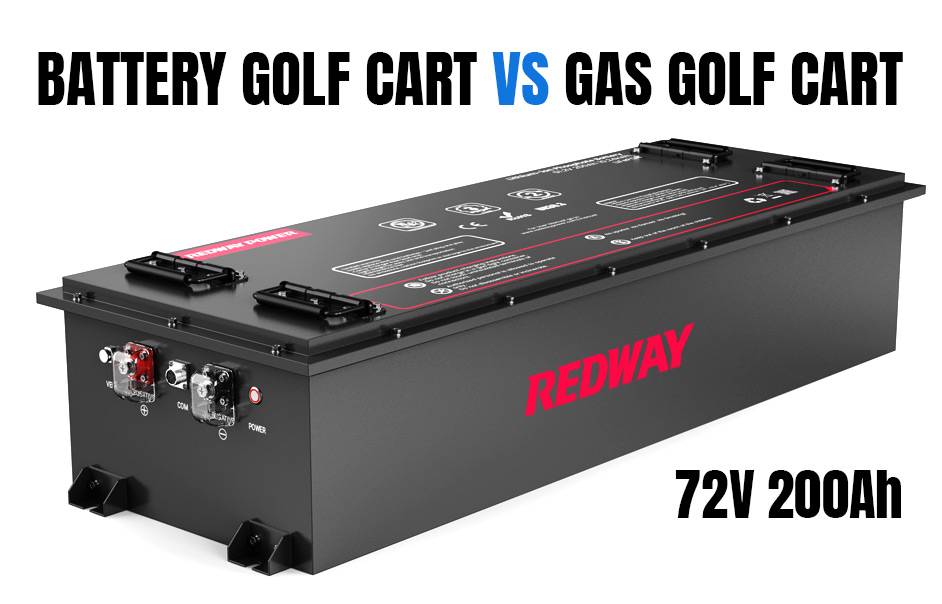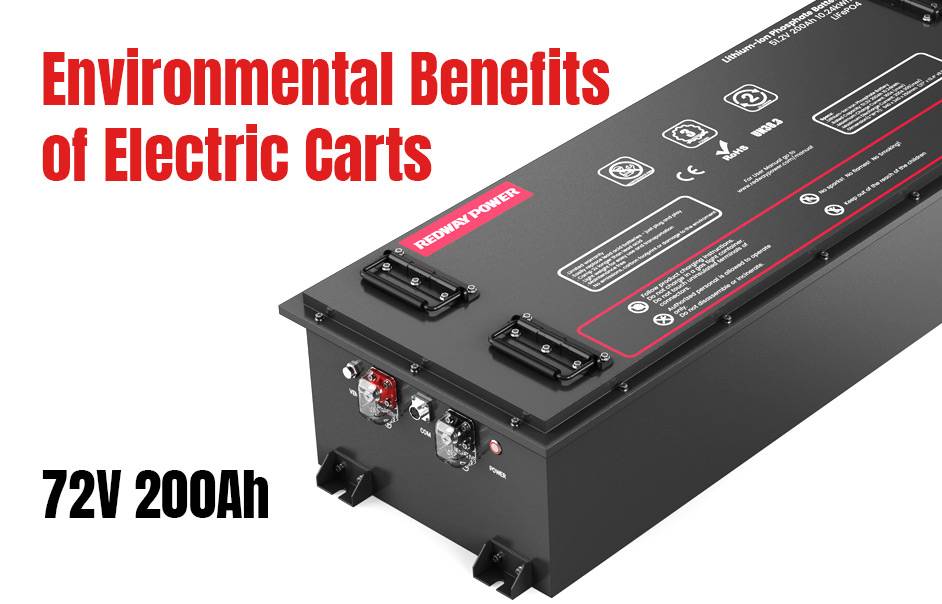- Rack-mounted Lithium Battery
- Golf Cart Lithium Battery
-
Golf Cart Lithium Battery
- 36V 50Ah (for Golf Carts)
- 36V 80Ah (for Golf Carts)
- 36V 100Ah (for Golf Carts)
- 48V 50Ah (for Golf Carts)
- 48V 100Ah (Discharge 100A for Golf Carts)
- 48V 100Ah (Discharge 150A for Golf Carts)
- 48V 100Ah (Discharge 200A for Golf Carts)
- 48V 120Ah (for Golf Carts)
- 48V 150Ah (for Golf Carts)
- 48V 160Ah (Discharge 100A for Golf Carts)
- 48V 160Ah (Discharge 160A for Golf Carts)
-
Golf Cart Lithium Battery
- Forklift Lithium Battery
- 12V Lithium Battery
- 24V Lithium Battery
- 36V Lithium Battery
- 48V Lithium Battery
-
48V LiFePO4 Battery
- 48V 50Ah
- 48V 50Ah (for Golf Carts)
- 48V 60Ah (8D)
- 48V 100Ah (8D)
- 48V 100Ah
- 48V 100Ah (Discharge 100A for Golf Carts)
- 48V 100Ah (Discharge 150A for Golf Carts)
- 48V 100Ah (Discharge 200A for Golf Carts)
- 48V 150Ah (for Golf Carts)
- 48V 160Ah (Discharge 100A for Golf Carts)
- 48V 160Ah (Discharge 160A for Golf Carts)
-
48V LiFePO4 Battery
- 60V Lithium Battery
-
60V LiFePO4 Battery
- 60V 20Ah
- 60V 30Ah
- 60V 50Ah
- 60V 50Ah (Small Size / Side Terminal)
- 60V 100Ah (for Electric Motocycle, Electric Scooter, LSV, AGV)
- 60V 100Ah (for Forklift, AGV, Electric Scooter, Sweeper)
- 60V 150Ah (E-Motocycle / E-Scooter / E-Tricycle / Tour LSV)
- 60V 200Ah (for Forklift, AGV, Electric Scooter, Sweeper)
-
60V LiFePO4 Battery
- 72V~96V Lithium Battery
- E-Bike Battery
- All-in-One Home-ESS
- Wall-mount Battery ESS
-
Home-ESS Lithium Battery PowerWall
- 24V 100Ah 2.4kWh PW24100-S PowerWall
- 48V 50Ah 2.4kWh PW4850-S PowerWall
- 48V 50Ah 2.56kWh PW5150-S PowerWall
- 48V 100Ah 5.12kWh PW51100-F PowerWall (IP65)
- 48V 100Ah 5.12kWh PW51100-S PowerWall
- 48V 100Ah 5.12kWh PW51100-H PowerWall
- 48V 200Ah 10kWh PW51200-H PowerWall
- 48V 300Ah 15kWh PW51300-H PowerWall
PowerWall 51.2V 100Ah LiFePO4 Lithium Battery
Highly popular in Asia and Eastern Europe.
CE Certification | Home-ESS -
Home-ESS Lithium Battery PowerWall
- Portable Power Stations
How to Compare Battery Golf Carts vs. Gas Golf Carts in Detail

When deciding between battery (electric) golf carts and gas golf carts, understanding their differences in performance, maintenance, costs, and overall suitability for your needs is crucial. This article provides a detailed comparison to help you make an informed choice.
What are the key differences between battery and gas golf carts?
The primary differences between battery and gas golf carts lie in their power sources, operational characteristics, and environmental impacts:
- Power Source: Battery-powered carts run on rechargeable batteries (typically lithium-ion or lead-acid), while gas carts use internal combustion engines fueled by gasoline.
- Operation: Electric carts offer quiet operation with instant torque, while gas carts provide more power for longer distances but operate with engine noise.
- Environmental Impact: Electric carts produce zero emissions during operation, making them environmentally friendly, whereas gas carts emit exhaust gases.
Chart: Key Differences Overview
| Feature | Battery Golf Carts | Gas Golf Carts |
|---|---|---|
| Power Source | Rechargeable batteries | Gasoline engine |
| Noise Level | Quiet operation | Noisy operation |
| Emissions | Zero emissions | Emits exhaust gases |
How does performance vary between battery and gas models?
Performance varies significantly based on the type of cart:
- Speed: Gas golf carts generally achieve higher top speeds (up to 25 mph) compared to electric models (typically around 20 mph). However, high-performance electric models can match or exceed these speeds with upgrades.
- Range: Gas-powered carts can travel longer distances on a single tank (100–200 miles), while electric models usually have a range of about 15–25 miles per charge, depending on battery capacity.
- Acceleration: Electric carts benefit from instant torque, providing quicker acceleration from a standstill compared to gas models.
Chart: Performance Comparison
| Feature | Battery Golf Carts | Gas Golf Carts |
|---|---|---|
| Top Speed | Up to 20 mph | Up to 25 mph |
| Range | 15–25 miles per charge | 100–200 miles per tank |
| Acceleration | Instant torque | Gradual acceleration |
What are the maintenance requirements for battery vs. gas golf carts?
Maintenance needs differ considerably between the two types:
- Battery Golf Carts:
- Require less routine maintenance due to fewer moving parts.
- Battery maintenance is essential; check water levels regularly for lead-acid batteries.
- Periodic cleaning of battery terminals to prevent corrosion.
- Gas Golf Carts:
- Require regular oil changes, filter replacements, and engine servicing.
- More frequent checks on fuel systems and exhaust components.
- Maintenance can be more costly over time due to the complexity of parts.
Chart: Maintenance Requirements
| Maintenance Task | Battery Golf Carts | Gas Golf Carts |
|---|---|---|
| Routine Checks | Monthly battery checks | Oil changes every 50 hours |
| Cleaning | Clean terminals every few months | Regular engine servicing needed |
| Replacement Parts | Battery replacement every 5–7 years | Various parts may need replacing annually |
How do costs compare for battery and gas golf carts?
Cost considerations play a significant role in choosing between the two types:
- Initial Purchase Price: Electric golf carts often have a higher upfront cost than their gas counterparts due to the price of batteries.
- Operating Costs: Electric models tend to be cheaper to operate since electricity is generally less expensive than gasoline; however, battery replacement can be costly.
- Maintenance Costs: Electric carts have lower maintenance costs due to fewer moving parts, while gas models incur higher ongoing expenses related to fuel and mechanical upkeep.
Chart: Cost Comparison
| Cost Type | Battery Golf Carts | Gas Golf Carts |
|---|---|---|
| Initial Purchase Price | Generally higher | Generally lower |
| Operating Costs | Lower (electricity) | Higher (fuel) |
| Maintenance Costs | Lower | Higher |
What should you consider when purchasing a golf cart?
When deciding which type of golf cart to purchase, consider:
- Usage Needs: Determine how you will use the cart—short trips around a neighborhood or long-distance travel across hilly terrain.
- Environmental Concerns: If reducing your carbon footprint is important, an electric cart may be preferable.
- Budget: Factor in both initial purchase price and long-term operating costs when making your decision.
- Terrain: Consider whether you will primarily use the cart on flat surfaces or require more power for hilly areas.
Chart: Considerations for Purchase
| Consideration | Description |
|---|---|
| Usage Needs | Assess how often and where you’ll use it |
| Environmental Concerns | Evaluate preferences regarding emissions |
| Budget | Analyze both upfront costs and ongoing expenses |
| Terrain | Determine if you need extra power for hills |
Industrial News
The market for golf carts continues to evolve with advancements in technology, particularly in electric models that feature improved battery systems offering longer ranges and faster charging times. Manufacturers are focusing on enhancing user experience by integrating smart technologies that allow monitoring of performance metrics via mobile apps. These developments aim not only at improving functionality but also at promoting sustainability in recreational vehicle use.
Redway Power Insights
“When considering a golf cart purchase, understanding the trade-offs between electric and gas options is essential,” states Redway Power’s expert team. “By evaluating your specific needs—such as terrain, usage frequency, and budget—you can make an informed decision that best suits your lifestyle.”
FAQ Section
Q: Which type of golf cart is better for hilly terrains?
A: Gas-powered golf carts typically perform better on hilly terrains due to their higher power output.Q: Do electric golf carts require more maintenance than gas ones?
A: No, electric golf carts generally require less maintenance since they have fewer moving parts.Q: Can I use my electric golf cart on long trips?
A: Electric golf carts have limited range (15–25 miles), so they may not be suitable for long trips without recharging options.













